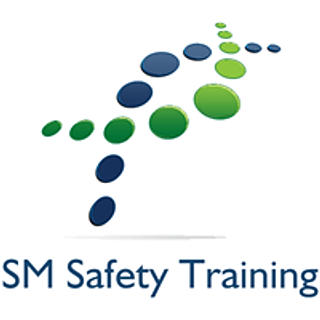What Injuries Are RIDDOR Reportable?
- steven mullan
- Apr 28
- 4 min read
Written by Steve Mullan CertIOSH 28/04/2025
Your Straight forward Guide to Staying Compliant.
When accidents happen at work, knowing what you must report isn’t just smart, it’s the law. The Reporting of Injuries, Diseases and Dangerous Occurrences Regulations (RIDDOR) spells out exactly what incidents need to be reported. But if you've ever felt unsure about what qualifies, you're not alone.
Let’s break it down clearly and simply. By the end of this guide, you'll know exactly which deaths, injuries, diseases, and events must be reported under RIDDOR, and why it matters.

What Injuries Are RIDDOR Reportable? Your Straightforward Guide to Staying Compliant
What Exactly Is RIDDOR?
RIDDOR isn’t just a mouthful of letters. It’s a crucial regulation that requires employers, managers, and even the self-employed to officially report certain workplace incidents.
If someone dies, gets seriously injured, contracts a work-related disease, or there's a dangerous event, RIDDOR says you must report it within specific timeframes (usually online).
But not every scrape or bruise needs to be logged. Only serious incidents that have bigger consequences make the list.
Still a bit fuzzy? No worries, let’s walk through exactly what's reportable.
RIDDOR Reportable: The Big Categories
Here’s what you’re legally required to report under RIDDOR:
Deaths
Major injuries
7-day injuries (extended absence)
Injuries to the public
Reportable diseases
Dangerous occurrences
Each has its own specific rules—let’s dive into them.
RIDDOR Reportable Injuries: Breaking It Down
Is It a RIDDOR Reportable Accident?
First, the incident must actually be a work-related acciden, something separate, identifiable, and unplanned that causes physical harm.For example:
Dropping a heavy box on your foot? ✔️
Heart attack at your desk (not caused by work activities)? ❌
If the incident happened during work and because of work, you’re on the right track for RIDDOR reporting.
Now, Is the Injury RIDDOR Reportable?
If it’s a work accident, the next step is checking if the resulting injury fits into these reportable types:
1. Deaths
Simply put: If a workplace accident leads to death, whether instantly or within a year, it must be reported.
Important: This includes both workers and non-workers (like visitors) if the death stems from a work-related accident.
2. Major Injuries
Here’s what counts as major:
Fractures (except fingers, thumbs, toes)
Amputations of limbs or digits
Permanent blindness or major sight reduction
Crush injuries damaging internal organs
Serious burns covering more than 10% of the body
Scalpings needing hospital treatment
Loss of consciousness from head injury or asphyxia
Serious heat or cold injuries requiring resuscitation or hospital admission over 24 hours
3. Injuries Leading to More Than 7 Days Off Work
If someone can’t do their usual job for over 7 consecutive days after an accident (excluding the day it happened), it’s reportable.You get up to 15 days to report it—but sooner is always better!
4. Injuries to the Public
Did a member of the public get hurt because of your work activity and end up in the hospital?If yes, you must report it, even if the injury doesn’t seem major.
Tip: Only hospital admissions count, precautionary check-ups don’t.

Contact us about our consultancy services to ensure you are compliant
Beyond Injuries: RIDDOR Reportable Diseases
RIDDOR isn’t just about physical accidents. Certain diagnosed diseases linked to workplace activities must also be reported, including:
Carpal Tunnel Syndrome (from vibrating tools)
Severe cramp in hand/forearm (repetitive motion)
Occupational dermatitis (skin irritants)
Hand-arm vibration syndrome
Occupational asthma
Tendonitis/Tenosynovitis (frequent repetitive motion)
Occupational cancer (from hazardous exposure)
Biological agent-related diseases (like lab infections)
Bottom Line: If work likely caused or worsened the illness, it’s reportable.

Dangerous Occurrences: Near Misses That Could’ve Been Deadly
Some events must be reported even if no one got hurt. Think of them as official “near-misses.”
Examples include:
Collapse of lifting equipment
Explosions or fire causing plant shutdowns over 24 hours
Uncontrolled releases of hazardous substances
Electrical contact with overhead power lines
Diving operation incidents
Train collisions
Major scaffolding collapses
Oil/gas well blowouts
If something had the potential to cause death or serious injury, it belongs on a RIDDOR report.
Key Takeaways: How to Stay RIDDOR Compliant
Always assess if an incident is work-related.
Determine if it caused a death, major injury, long-term incapacity, illness, or dangerous event.
Use the official HSE online forms or call when necessary.
Report within required timeframes, don’t delay!
Remember: Accurate reporting doesn’t just protect your business legally—it helps create safer workplaces for everyone.
Further reading on: Want to Understanding RIDDOR Reporting Timescales
FAQs: Quick Answers About RIDDOR
1. When Should I Report an Incident Under RIDDOR?
As soon as possible, serious injuries and deaths need immediate reporting. 7-day injuries allow up to 15 days.
2. Does RIDDOR Apply to Self-Employed Workers?
Yes. Self-employed people must report their own incidents when working on premises under another’s control.
3. What Happens If I Don’t Report an Incident?
Failure to report can result in hefty fines or legal action. Don’t take the risk.
4. Do Near-Misses Always Have to Be Reported?
Only if the near-miss is a dangerous occurrence listed under RIDDOR.
5. Is First Aid Treatment a RIDDOR Report?
No—only hospital treatment after a work-related accident triggers reporting for members of the public.
6. Can You Correct a Mistake on a RIDDOR Report?
Yes—contact the HSE to update incorrect information.
Want to get even sharper on health and safety? Check out the HSE’s official RIDDOR guidance for the full lowdown!
Or you can contact us to have a chat to discuss your situation. contact us
For more information on RIDDOR, take our Health and Safety Course. After completing the course, you will receive a certificate for your training records.





Comments